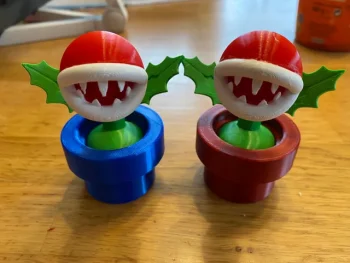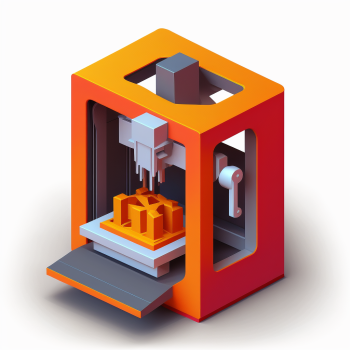Did you ever wonder what’s the difference between all those 3D Printers available? Below you can find the available types of printers compared to each other.

Did you ever wonder what’s the difference between all those 3D Printers available? Below you can find the available types of printers compared to each other.
What is a Resin printer?
A resin 3D printer, also known as a Stereolithography (SLA) printer, is a type of 3D printing technology that uses a liquid resin as the build material. The printer uses a laser or other light source to cure (harden) the resin layer by layer to create a 3D object.
In an SLA printer, the build platform is lowered into a tank of liquid resin. The printer then projects a pattern of the object onto the resin using a laser or other light source. The light cures the resin, turning it into a solid object. The platform is then lowered slightly, and the process is repeated until the entire object has been built.
Resin 3D printers are known for their high resolution and ability to produce highly detailed objects with smooth surfaces. However, they can be more expensive and require more maintenance than other types of 3D printers, such as Fused Deposition Modeling (FDM) printers. Resins used in SLA printers are also typically more expensive than the plastic filaments used in FDM printers.
What is a FDM printer?
Fused Deposition Modeling (FDM) is a type of 3D printing technology that uses a plastic filament, which is melted and extruded layer by layer to build up a 3D object. It is one of the most widely used 3D printing technologies, particularly for home and hobbyist use, due to its relatively low cost and ease of use.
In an FDM printer, a plastic filament is fed from a spool through a heating element, which melts the plastic. The melted plastic is then extruded through a nozzle, which moves back and forth according to the 3D model being printed. The nozzle deposits the plastic in thin layers, building up the object layer by layer.
FDM printing is a relatively slow process, as each layer must be printed and allowed to cool before the next layer can be added. The quality of the finished object depends on the resolution of the printer, as well as the type and quality of the filament being used. FDM printers are capable of producing a wide range of objects, including mechanical parts, prototypes, and even finished products.
What is a SLS printer?
Selective Laser Sintering (SLS) is a type of 3D printing technology that uses a laser to fuse powdered material into a solid object, layer by layer. It is a high-resolution printing process that can produce highly detailed and accurate parts with smooth surfaces.
In an SLS printer, the build platform is lowered into a bed of powdered material, such as plastic, metal, or ceramic. A laser is then used to fuse the material in a pattern that corresponds to the object being printed. The platform is then lowered slightly, and a new layer of powdered material is added. The process is repeated until the entire object has been built.
SLS printers are widely used in a variety of industries, including aerospace, automotive, and medical. They are known for their ability to produce strong, durable parts and for their versatility in terms of the materials that can be used. However, SLS printers can be more expensive and require more maintenance than other types of 3D printers, such as Fused Deposition Modeling (FDM) printers.
What are the main differences between FDM and SLA printers?
Selective Laser Sintering (SLS) and Fused Deposition Modeling (FDM) are both 3D printing technologies, but they work in different ways. Here are some key differences between SLS and FDM printers:
- Material: SLS printers use a wide range of materials, including plastics, metals, and ceramics. FDM printers, on the other hand, typically use plastic filaments.
- Build process: In an SLS printer, a laser is used to fuse powdered material into a solid object, layer by layer. In an FDM printer, a plastic filament is melted and extruded through a nozzle to build up the object layer by layer.
- Resolution: SLS printers can produce highly detailed objects with smooth surfaces, as the laser can fuse the powdered material with high precision. FDM printers have a lower resolution, as the extruded plastic is laid down in layers with a minimum thickness.
- Speed: SLS printing is generally faster than FDM printing, as the laser can fuse multiple layers of powdered material at once. FDM printing is slower, as each layer must be printed and allowed to cool before the next layer can be added.
- Cost: SLS printers tend to be more expensive than FDM printers, due to the cost of the lasers and the specialized materials used. FDM printers are generally more affordable, particularly for home and hobbyist use.
